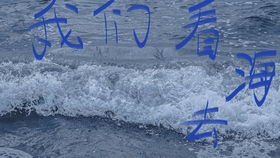Introduction:
Fishing is a relaxing and rewarding activity that can be made even more enjoyable when you're equipped with the right techniques. One of the most fundamental aspects of fishing is the act of lifting the rod, or "提竿." This seemingly simple motion can become quite tiring over time, especially if you're not using the right techniques. In this article, we'll delve into how to effectively lift your fishing rod to save energy and improve your overall fishing experience.
Understanding the Basics:

Before we dive into the specific techniques, it's important to understand the basic mechanics of how a fishing rod works. A fishing rod is designed to leverage the tension in the line to transfer the force of a fish's pull to the reel. When you lift the rod, you're essentially creating this tension, which is then transferred to the fish.
The Right Gear:
The first step in making your fishing experience more efficient is to ensure you have the right gear. Here are a few key points to consider:
- Rod Length: A longer rod can provide better leverage, making it easier to lift. However, it's important to choose a rod that is appropriate for the type of fishing you're doing and the size of the fish you're targeting.
- Reel Type: The type of reel you use can also affect how much effort is required to lift the rod. Spincasting reels, for example, are generally easier to lift than baitcasting reels.
- Line Strength: Using line that is too strong for the fish you're targeting can make it more difficult to feel the bite and lift the rod effectively.
The Right Grip:
The way you grip the rod can significantly impact the effort required to lift it. Here are some tips:
- Overhand Grip: This is the most common grip and is suitable for most fishing situations. Hold the rod with your thumb and index finger at the top of the handle, with the rest of your fingers wrapping around the rod.
- Underhand Grip: This grip is better for casting heavy lures or when you need more control over the rod. Hold the rod with your thumb and index finger at the bottom of the handle.
- Two-handed Grip: For longer rods or when fishing in windy conditions, a two-handed grip can be very effective. Hold the rod with both hands, one at the top and one at the bottom of the handle.
The Lift Technique:
Now that you have the right grip and gear, it's time to focus on the lift technique itself:
- Start with a Good Stance: Stand with your feet shoulder-width apart and your knees slightly bent. This stance will help you maintain balance and reduce strain.
- Use Your Whole Body: Instead of just lifting with your arms, use your entire body. Rotate your shoulders and hips to generate power.
- Keep the Rod Low: Begin the lift with the rod close to the water. As you lift, keep the rod low to the water to increase leverage.
- Lift with a Wrist Roll: Instead of using just your arms, roll your wrist as you lift the rod. This will help you maintain control and reduce fatigue.
- Timing is Key: Lift the rod just as the fish starts to pull, and then let the reel handle do the work of lifting the line. Avoid lifting the rod too early or too late.
Practice Makes Perfect:
Like any skill, the more you practice, the better you'll become at lifting your rod efficiently. Try different techniques and find what works best for you. Over time, you'll develop a natural rhythm that will make fishing more enjoyable and less tiring.
Conclusion:
By focusing on the right gear, grip, and lift technique, you can significantly reduce the effort required to lift your fishing rod. Remember, the goal is to enjoy the experience of fishing, not to become exhausted by it. With these tips, you'll be well on your way to becoming a more efficient and relaxed angler. Happy fishing!












